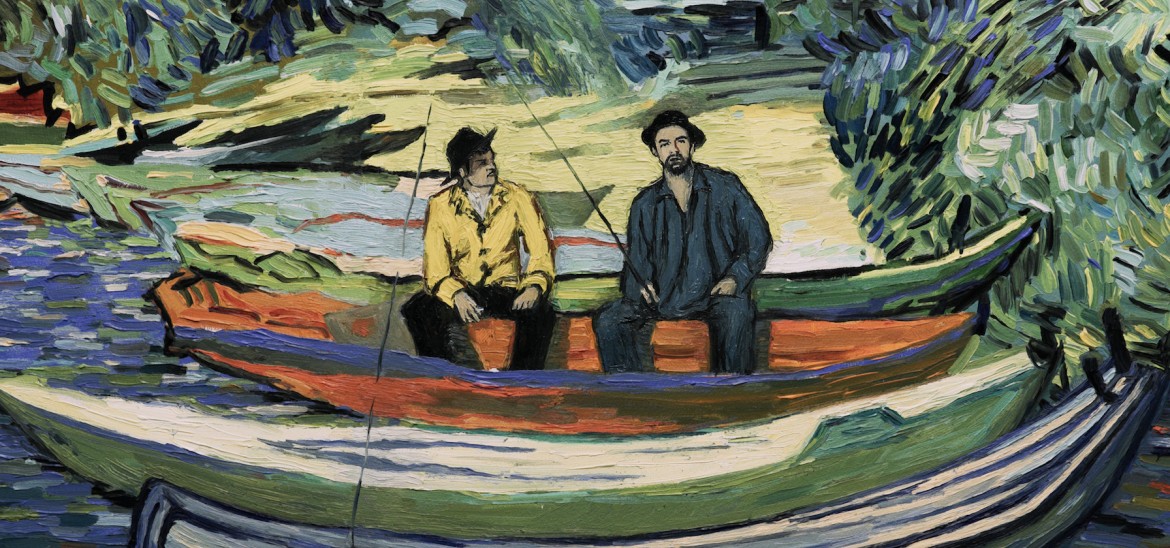Into Film Clubs
Find out everything you need to know about starting an Into Film Club.



Loving Vincent is a unique project: the world's first fully painted feature film, telling the story of the life and death of Dutch artist Vincent Van Gogh through his own work. Every frame of the film - a total of around 65,000 - is an oil-painting, replicating some of the artist's best-known pieces, and hand-painted by a team of 125 professional oil-painters from around the world, over a period of more than seven years. With each frame needing to be painted from scratch, the filmmakers believe it to be - on a frame by frame basis - the slowest assembled feature-length film in history!
Set in 1891 France, the film tells the story of Armand, a young man given a letter by his father to hand deliver to Theo, the brother of Vincent Van Gogh, who has recently killed himself. Discovering that Theo has also died, Armand journeys to the area where Vincent spent his final days in order to deliver the letter to Van Gogh's physician, Dr. Gachet. This sets in motion an investigation into what really might have happened the day Van Gogh died, and sees Armand interviewing a series of individuals who look remarkably familiar, being as they are, the subjects of some of the artist's best known paintings.
Loving Vincent gives the audience a new perspective on Van Gogh's paintings and an insight not only into the personalities of the individuals they depict, but also into the man who painted them; an extraordinary but tormented genius who only picked up a paintbrush at the age of 28 to help deal with his mental health problems. The message of the film is that the best way to know an artist is through their work; a belief expressed by Vincent himself, who proclaimed: "We cannot speak other than our paintings."
The film was first shot in live action, and then hand-painted over frame-by-frame in oil, giving the impression that the paint itself is moving. When deciding to use real actors, the filmmakers took inspiration from Van Gogh himself: he liked to paint real people in front of him, so in turn the filmmakers wanted to place real faces into their frames. These actors (including Douglas Murray, Chris O'Dowd and Saoirse Ronan) remain recognisable, and give performances that we might see in a live-action film whilst simultaneously looking like paintings come to life.
The cast worked on sets constructed to resemble particular paintings, or against green-screens, with the paintings placed in after filming was complete. This footage became the reference point for the painters, who completed over 900 individual paintings for the project. Re-imagining his paintings into the film, there are 94 Van Gogh works that feature in a form very close to the original, with a further 31 paintings featuring either substantially or partially. For non-experts, the filmmakers have helpfully assembled a viewer's guide to play over the closing credits!
With such a methodical process, it was not uncommon for the artists to work for an entire week just to produce one second of film! This dedication is similar to how stop-frame animation works in studios like Aardman. In their case, clay is meticulously moved frame by frame and individually photographed to give the impression of movement. With Loving Vincent, the process applies to oil paintings, with twelve high-resolution photographs of the paintings making up each second of film. The style is similar to Rotoscope animation, in which animators trace over live-action footage frame-by-frame when realistic action is required. Examples of this process include Richard Linklater's A Scanner Darkly and Waking Life, and 2016 documentary Tower.
For director Dorota Kobiela, the idea for Loving Vincent stemmed from being inspired by how Van Gogh discovered art as a young man and used it as a way to bring beauty to the world - something which helped her through periods of depression. Although a man in a great deal of turmoil and pain, Van Gogh's paintings (as well as the letters to his brother Theo, which inspired much of the film) have helped many people through their own issues around wellbeing; his work having a remarkable ability to tap into emotions, particularly at difficult times. Having initially planned the project as a short film, Dorota teamed up with Hugh Welchman, who previously produced the brilliant short film of Peter and the Wolf to bring it to life as a feature, assembling a team of 124 painters (plus herself).
Loving Vincent may be the first film of its kind, but it is far from the first to tell the life story of a great artist on screen. Van Gogh himself was previously played by Kirk Douglas in the 1956 drama Lust For Life. Other great examples include Frida; Girl with a Pearl Earring; Factory Girl; and Basquiat, as well as British director Mike Leigh's Mr. Turner, a biopic of JMW Turner, for which actor Timothy Spall spent two years learning to paint before filming began.
These films bring the artists' work to life, allowing us to see things in the images that we might not have previously noticed, or perhaps introducing us to the work of a great figure we were unaware of. However, none have achieved this in quite the same way as Loving Vincent; a truly unique film that will fascinate students of animation and art history alike, and encourage discussion about the artwork itself. With luck, the film might also inspire audiences previously unaware of Van Gogh to find out more about him. Or even to pick up a paintbrush themselves!
Hear more from the Curation Team in our Into Film Recommends Podcast. Also available on itunes.
Viewing 4 of 4 related items.

Get in touch with your article ideas for the News and Views section.